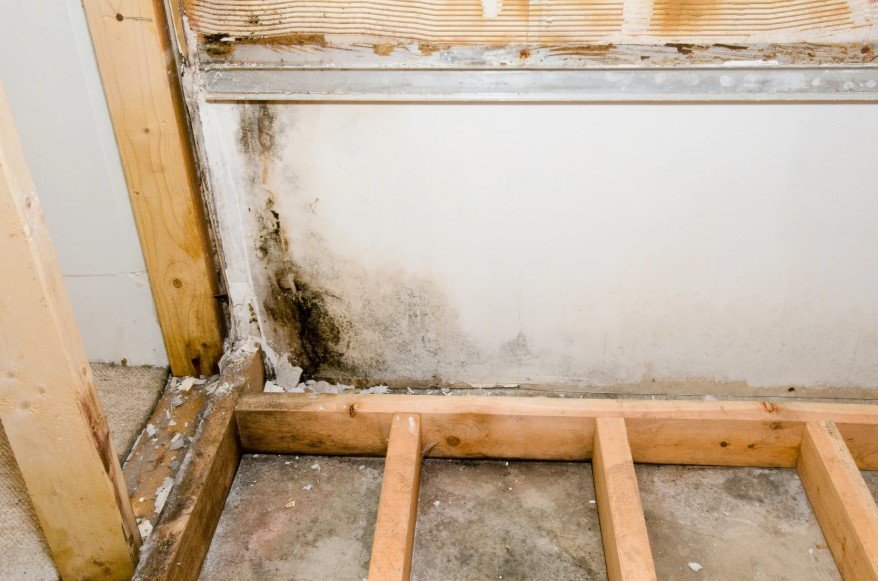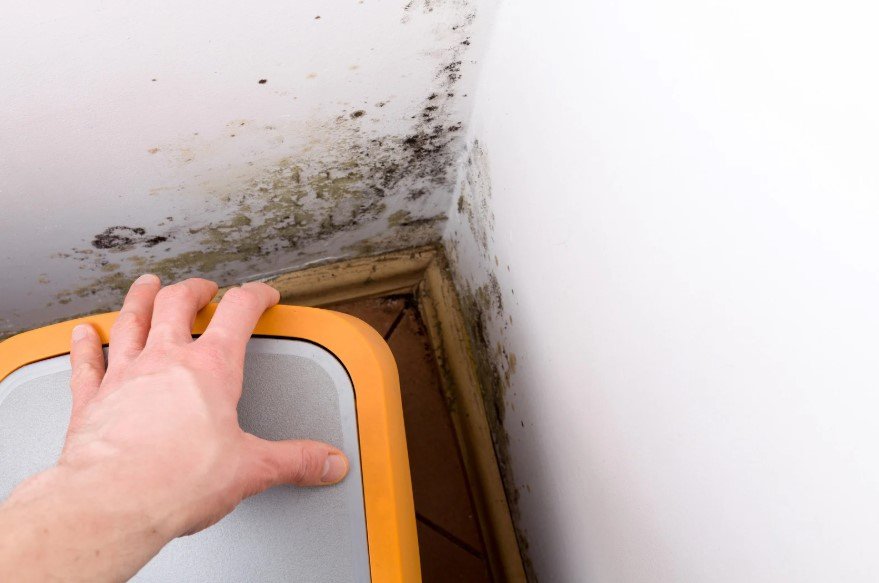This article provides valuable information on the issues of mold and indoor air quality (IAQ) in schools. Backed by facts and statistics, it aims to educate readers about the importance of addressing these concerns in educational environments. To guide readers in creating healthy indoor environments, the Agency recommends utilizing the Indoor Air Quality Tools for Schools kit as a premier resource.
 Mold and Indoor Air Quality in Schools: Plumbing leaks are a major source of moisture that can lead to a mold outbreak in schools.
Mold and Indoor Air Quality in Schools: Plumbing leaks are a major source of moisture that can lead to a mold outbreak in schools.
Mold and Indoor Air Quality in Schools: Common Moisture Sources in Schools
School buildings often face moisture problems due to various factors, such as roof and plumbing leaks, condensation, excess humidity, and changes in construction practices. Budget constraints and delayed maintenance also contribute to these issues. Additionally, temporary structures like trailers and portable classrooms are frequently associated with moisture and mold problems.

Mold and indoor air quality in schools: Proper humidity management in the school environment is key to preventing mold and ensuring student welfare. Health and safety in schools are enhanced through effective mold remediation and air purification practices. Regular building maintenance is crucial for environmental control and preventing mold-related issues. Facility management should prioritize health education to inform staff and students about the importance of air quality and mold prevention.
Mold and Indoor Air Quality in Schools: Reducing Mold Growth in Schools
Reduce Indoor Humidity
-
- Ventilate showers and moisture-generating sources outside.
- Utilize air conditioners and dehumidifiers to control humidity levels.
- Ensure adequate ventilation to maintain indoor humidity between 30-60%.
- Use exhaust fans during activities that generate moisture in food service areas.
Reducing indoor humidity is critical in ensuring a healthy and comfortable learning environment in schools. By implementing effective strategies, we can effectively control moisture levels and mitigate the risk of mold growth. These proactive steps contribute to mold prevention and promote optimal indoor air quality, creating an atmosphere that fosters the well-being and productivity of students and staff alike.
Inspect for Signs of Mold and Moisture
-
- Look for moldy odors.
- Check for water stains or discoloration on ceilings, walls, floors, and window sills.
- Examine sinks, bathrooms, and air conditioning or refrigerator drip pans for standing water or mold.
Inspecting for signs of mold and moisture is paramount in maintaining a healthy and safe school learning environment. By being vigilant and proactive in identifying these indicators, we can promptly address any potential issues and prevent the detrimental effects of mold growth. Look for telltale signs such as moldy odors, water stains, or discoloration on ceilings, walls, floors, and window sills. Please pay close attention to areas like sinks, bathrooms, and air conditioning or refrigerator drip pans, as they are typical hotspots for moisture accumulation.
By diligently carrying out these inspections, we can identify and rectify sources of moisture, leaks, or spills on time, ensuring that our schools remain free from the hazards associated with mold and excessive moisture.
Prompt Response to Moisture and Mold
-
- Clean and dry wet materials within 24-48 hours to prevent mold growth.
- Address the source of water problems or leaks promptly.
- Clean hard surfaces with water and detergent, ensuring thorough drying.
- Consider replacing moldy, absorbent materials like ceiling tiles.
- Inspect mechanical rooms and roofs for unsanitary conditions, leaks, or spills.
Thoroughly cleaning mold off hard surfaces using appropriate cleaning agents and ensuring complete drying is essential in eliminating potential health hazards. Additionally, promptly replacing moldy, absorbent materials like ceiling tiles can prevent the spread of mold spores. By consistently implementing these prompt response measures, we can safeguard the well-being of students, staff and the overall integrity of our educational facilities.
Preventing Moisture Condensation
-
- Add insulation to reduce condensation on cold surfaces such as windows, piping, exterior walls, rooms, or floors.
Proper insulation acts as a barrier, minimizing temperature differentials and reducing the likelihood of condensation forming on these surfaces. By implementing insulation measures, we can create a more thermally balanced environment, ensuring that students and staff are comfortable and protected from potential issues caused by moisture condensation.
Floor and Carpet Cleaning
-
- Immediately remove spots and stains, following the manufacturer’s recommended techniques.
- Prevent moisture accumulation and ensure quick drying of cleaned areas.
- Avoid carpet installation in areas prone to perpetual moisture problems.
Ensuring that cleaned areas are dried quickly is crucial to prevent moisture-related issues. It is advisable to avoid carpet installation in areas prone to perpetual moisture problems, such as near drinking fountains, classroom sinks, or concrete floors with leaks or frequent condensation. By adopting meticulous floor and carpet cleaning practices, we create a welcoming and healthy atmosphere that enhances students’ and staff’s overall well-being and comfort.

Mold and Indoor Air Quality in Schools: Mold Assessment Services is dedicated to creating healthy schools by providing comprehensive solutions for mold-free environments. With our expert team and advanced techniques, we conduct thorough inspections and assessments to identify and address potential mold issues in educational facilities.
Mold Assessment Services: Ensuring Mold and Indoor Air Quality in Schools
Addressing issues with mold and indoor air quality in schools is crucial for creating a healthy and conducive learning environment. By implementing the suggested measures, including reducing indoor humidity, inspecting for signs of mold and moisture, and promptly responding to any issues, schools can significantly reduce the risk of mold growth and maintain optimal indoor air quality.
If you suspect mold in your property, take proactive measures by contacting Mold Assessment Services, a professional mold assessment company. Our expert team provides comprehensive mold assessment services to identify and address mold issues in your home or rental property.
To schedule a mold inspection, call us today at 305-244-7379. Our friendly and knowledgeable staff will be delighted to assist you and answer any questions. You can also contact us by completing the form on our website, and our team will promptly respond. Don’t wait any longer; ensure a safe and healthy living environment by arranging your mold inspection now.


